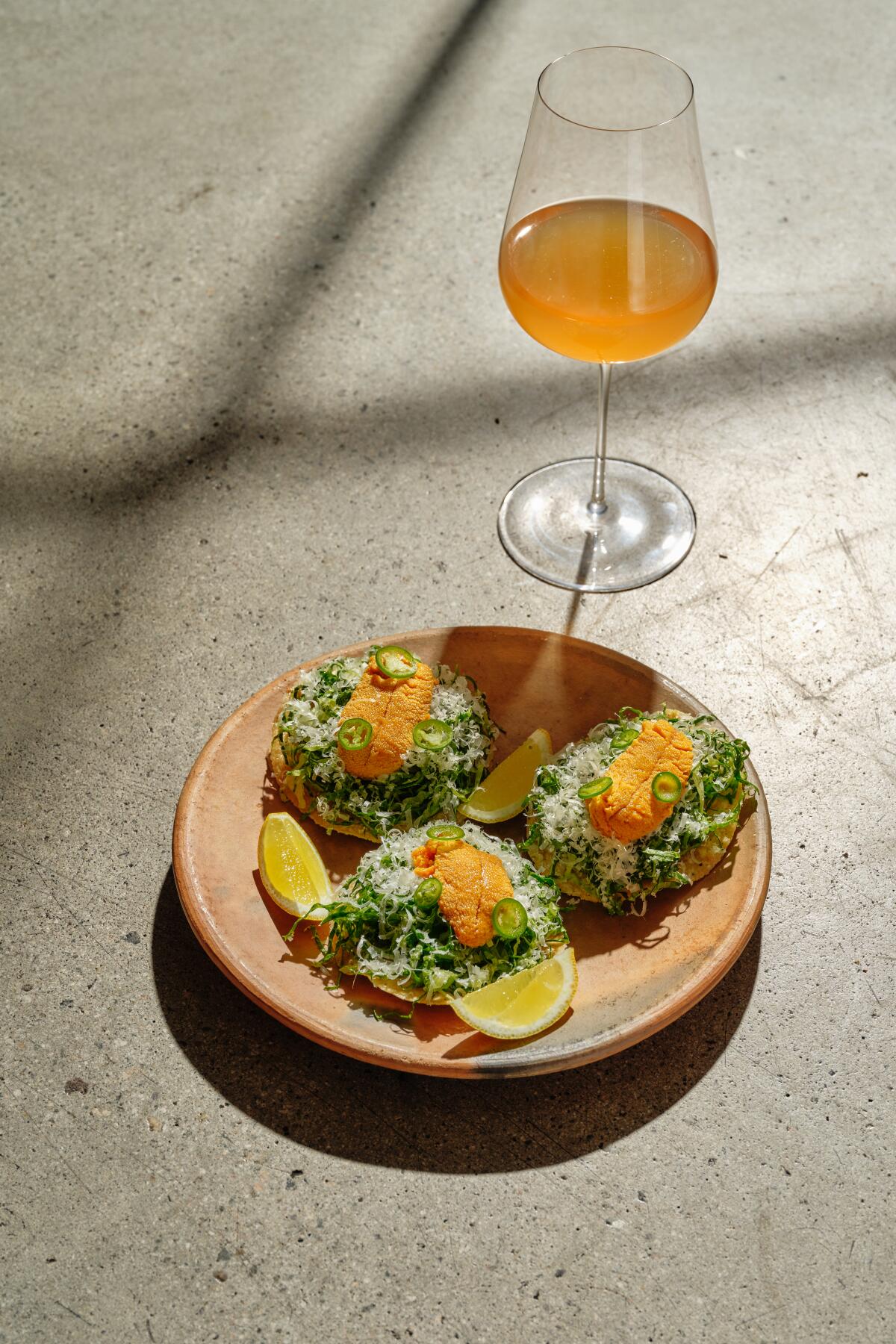
The best mariscos, sushi and seafood restaurants in L.A. from the 101 guide
When the dog days of summer hit and turning on the oven is out of the question, seafood emerges as a convenient and refreshing option. You can pick up tinned fish for an impromptu picnic at the beach, spend a happy hour shooting oysters or go all out with a seafood tower on ice, maybe with a glass of champagne alongside. And no matter what type of cuisine you’re craving — Mexican, Vietnamese, Thai or simply an all-star supper centered around the sea — you’ll find plenty of options in and around Los Angeles. We have the abundant Pacific Ocean nearby and we’re also privy to a world-class restaurant scene that stands out as a leader in sustainable seafood practices. So not only can you indulge in butter-drenched mussels or spicy mariscos at a moment’s notice, you can feel confident knowing that these purveyors have employed the highest standards in sourcing your catch of the day.
With schools of seafood restaurants at our disposal, we’ve helped you narrow down the best options with 21 selections from the latest 101 Restaurants guide, spanning high-end Japanese, classic East Coast-style seafood houses and more, including our 2023 best restaurant of the year. And if someone in your party prefers land or vegetables over sea, you’ll find many of these menus will accommodate them as well. — Danielle Dorsey
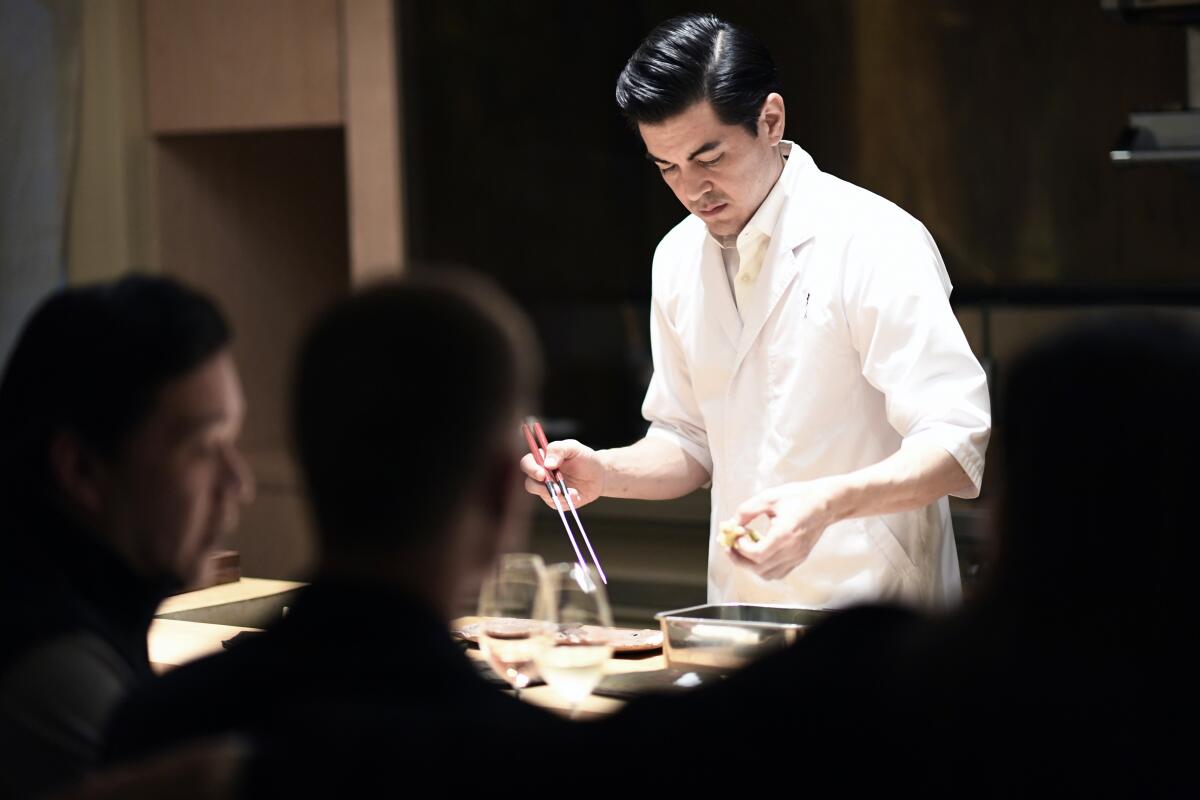
Hayato
Go began working at his father’s sushi restaurant in Seal Beach when he was 15. He’s been cooking in front of people for nearly 30 years. He can be at once immersed in his tasks and disarmingly relaxed. He tells funny travel stories; people lob out random questions about his favorite places to eat in Los Angeles. Bottles of wine may be shared among customers who arrived as strangers. By the time there are seconds (or thirds) of black cod and rice, followed by muskmelon and matcha for dessert, the group can be almost slaphappy from elation. It’s happened at each of my handful of meals at Hayato, this dinner-party-of-the-gods moment Go creates without forcing or staging a mood. I drift into the night always with the same feeling: That was some serious food, but that was also a seriously fun evening.
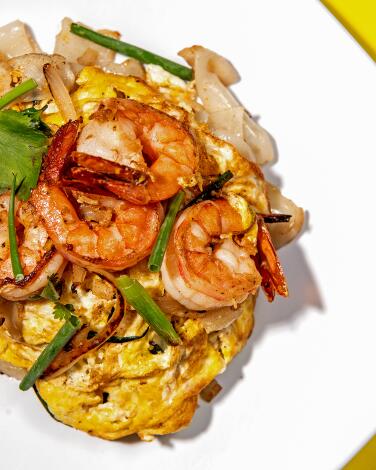
Anajak Thai
At Thai Taco Tuesday, or #TTT as Justin tags it on Instagram, expect weekly whims — perhaps blue corn tortillas cradling Ora King salmon dressed with purple cabbage, a slick of mayo, chili crisp and nam jim, or tostadas overlaid with rounds of lap cheong, brightened with mint, or lobes of kanpachi dotted with salmon roe. All the while, the restaurant’s primary menu is tighter, truer, stronger. Fried chicken, a newer restaurant staple, is sheathed in rice-flour batter and scattered with fried shallots. The bird is prepared in the style of Nakhon Si Thammarat, a city in Southern Thailand where Rattikorn Pichetrungsi, Justin’s mother, has family. An optional side of caviar is very much Justin’s idea of embellishment.
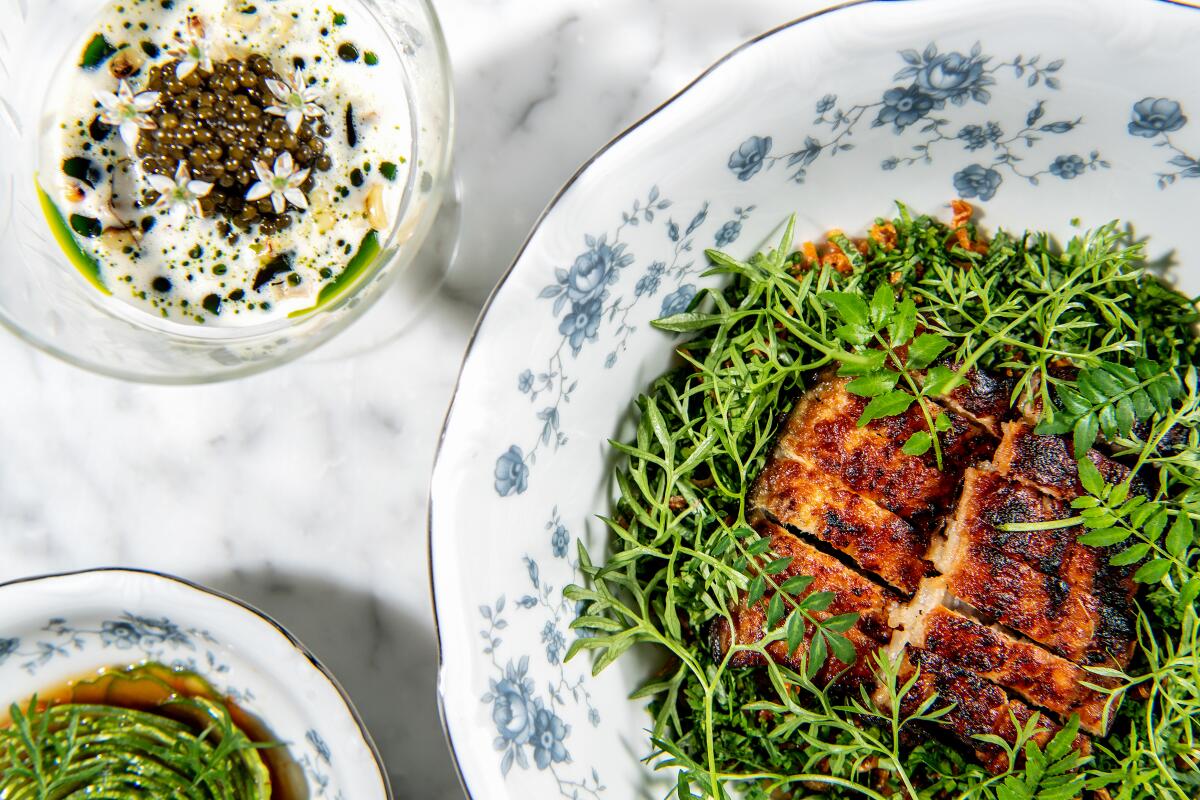
Kato
From the kitchen, scallops or other seasonal seafood will arrive in a fish-fragrant sauce, the perfumes of garlic and ginger blazing like a comet’s twin tails. A hot brown-butter doughnut with uni and Ibérico ham will precede a showstopper of Dungeness crab and spinach in a wild butter sauce that involves mussel liquor, fermented cream and smoked onions. Caviar crowns the dish, of course. The cost is $225 per person. It’s a worthy splurge, however you consider Jon Yao’s food. If you’re looking to parse the almost clinical dissection of nostalgia, identity and luxury, the intellectual fodder is there. If you want simply to savor a beautiful, thoughtful sequence of plates, he can make you feel nourished on many levels.
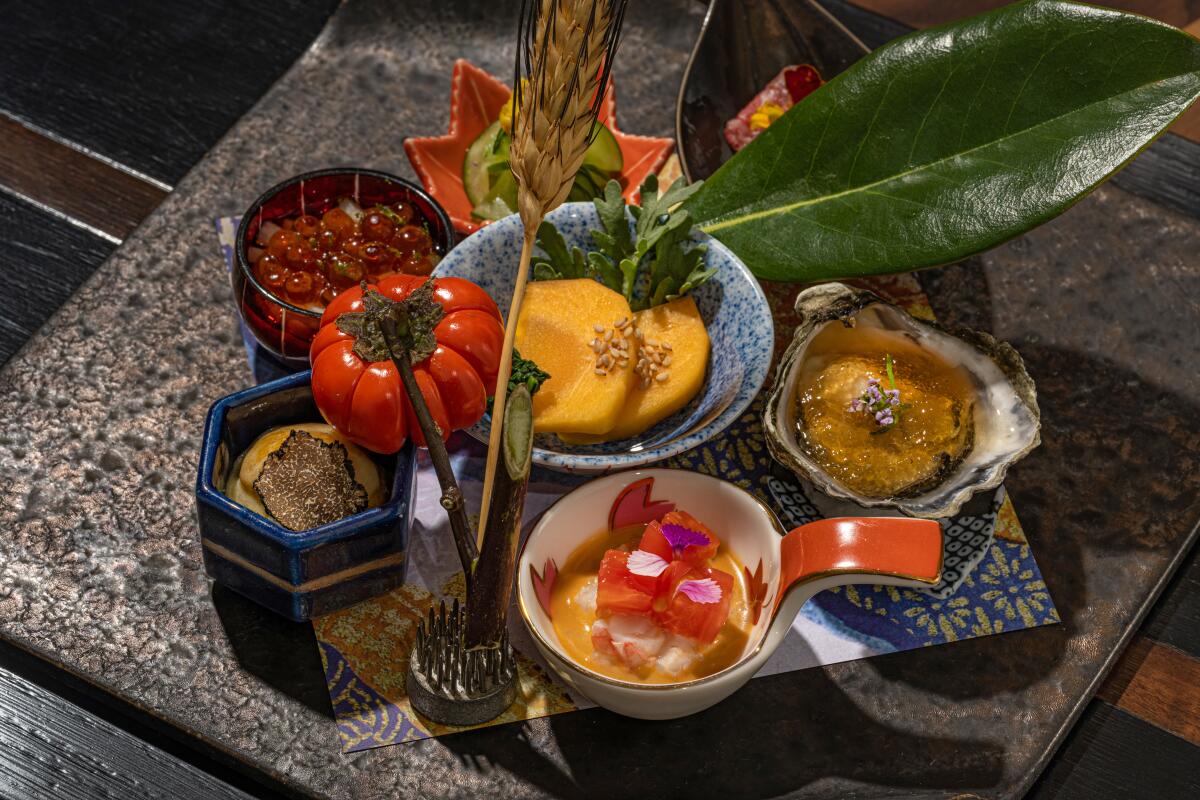
n/naka
Niki Nakayama composes her tasting menus around the precepts of kaiseki, which evolved out of Japanese tea ceremony traditions, but she isn’t confined by its structure. Along with Carole Iida-Nakayama, her wife and fellow chef, she follows an Angeleno’s regard for the farmers markets and for her own unmovable individualism. Their plates revise the notion of “what grows together, goes together” into Mary Oliver poems. Forests and seas of vegetables, noodles, seafood and broths appear as distinct habitats. It’s as if they’ve somehow occurred naturally, though the skill involved is also obvious and tremendous.
You will need to fight like hell for a reservation at n/naka. It will be worth it.
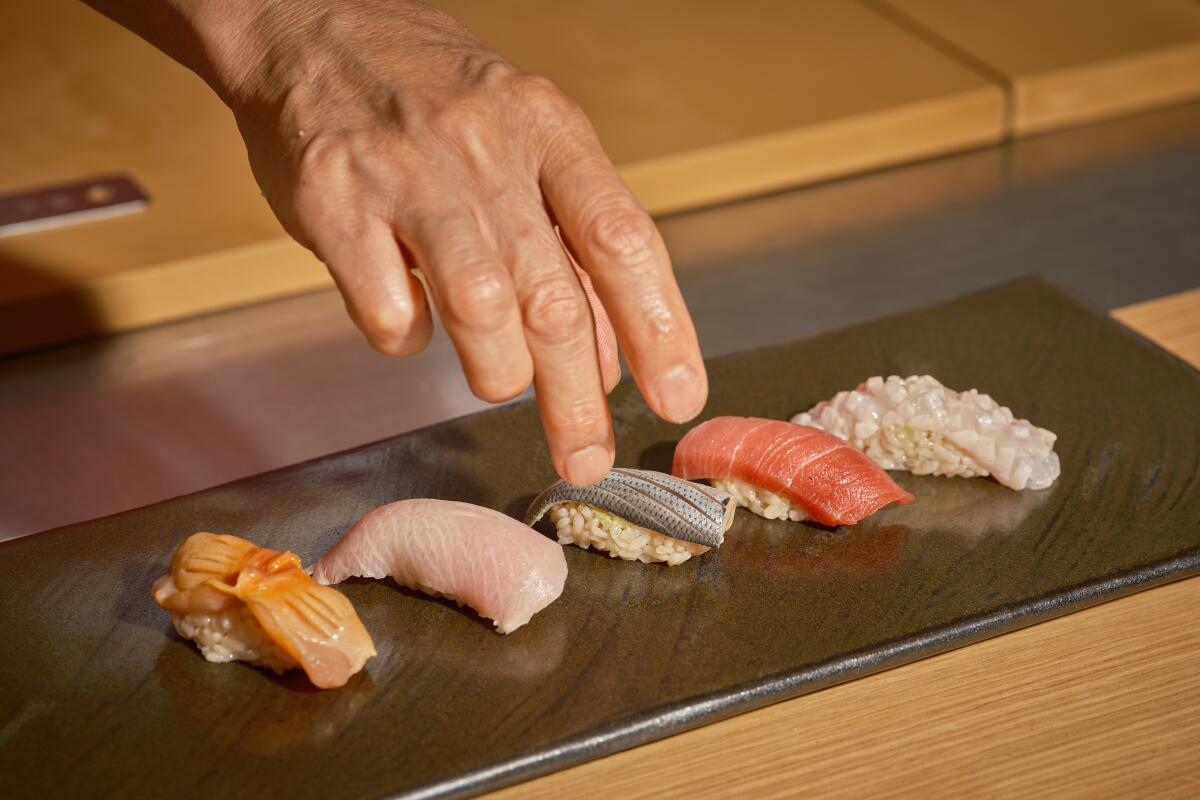
Morihiro
Onodera has a special place in L.A. His splicing of traditions and innovations, his quest for the perfect sushi rice and his talents as a ceramist have made him a legend. Some sushi bars radiate serenity, or gravity. His tiny place exudes a chaotic sort of warmth. Seiichi Daimo, a certified sake sommelier, pours the most compelling pairings of any sushi bar in L.A. When I joked with Onodera once that he serves so many opening omakase courses that maybe some customers could leave satisfied without any nigiri, he bellowed back, “No way. This is a sushi restaurant!” You will leave very full and deeply aware that this is what fine dining in Los Angeles is all about.
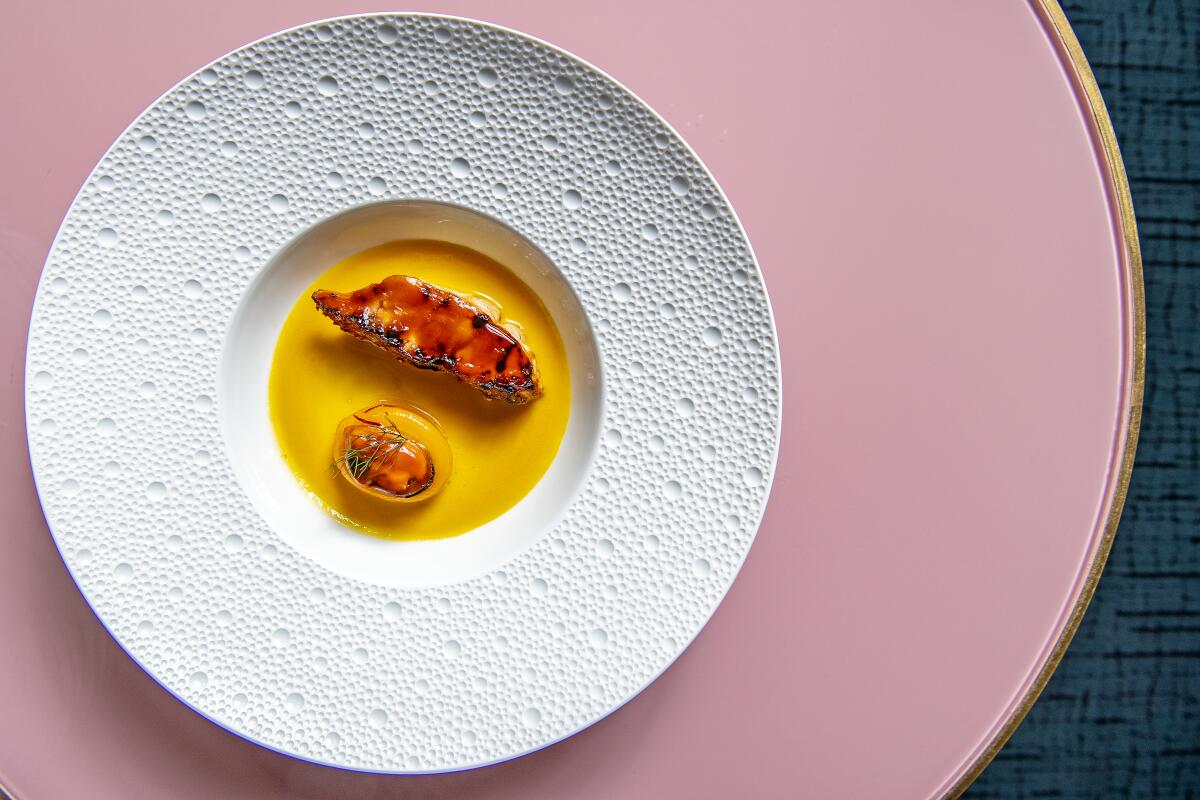
Providence
If you desire, white truffles will rain down over risotto or golden scrambled eggs; cocktails can be made tableside; and a sommelier might arrange a parade of wine pairings that costs nearly as much as the tasting menu, which is $295 per person. Go ahead and splurge on the optional uni egg gilded with Champagne beurre blanc. Fanciness without human connection feels vacant, and the warm, alert individuality that Providence’s service team brings to the experience has contributed as much to the restaurant’s longevity as the brilliant food. I recently brought a 30-something Times colleague (who doesn’t work on the Food team) for his first dinner to Providence, and at the end of the evening he said, “If I make it to 80, I’m still going to be thinking about this meal.” I sat with his words for a minute, and then I thought: Same.
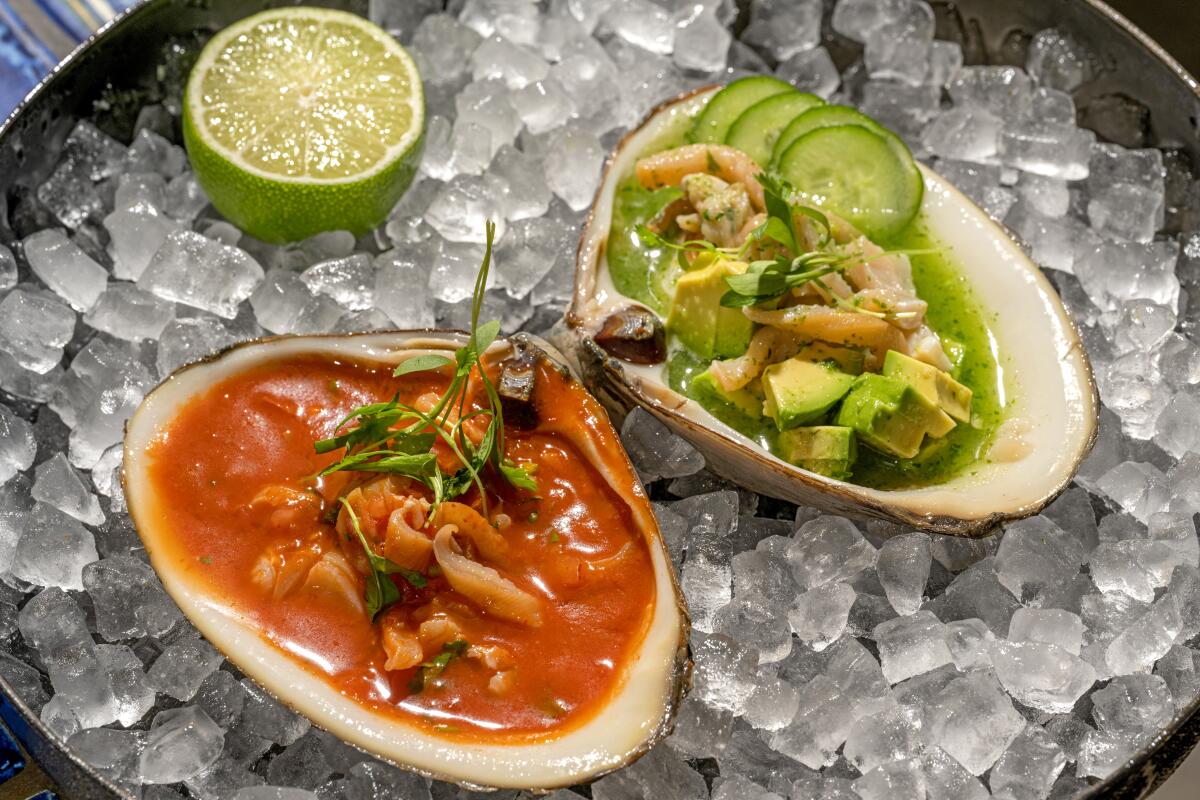
Holbox
The best news? After a two-year absence, Cetina has revived his weekly six-course tasting menu. Holbox’s 10-seat counter takes on the intimacy of a sushi bar as he passes out aguachile in wincingly tart citrus marinade, the better to offset the sweetness of scallops and spot prawns, and a fried taco filled with Dungeness crab and smoked yellowtail. The cost is currently $115 per person. I’ve paid twice as much in Los Angeles for meals half as revelatory.
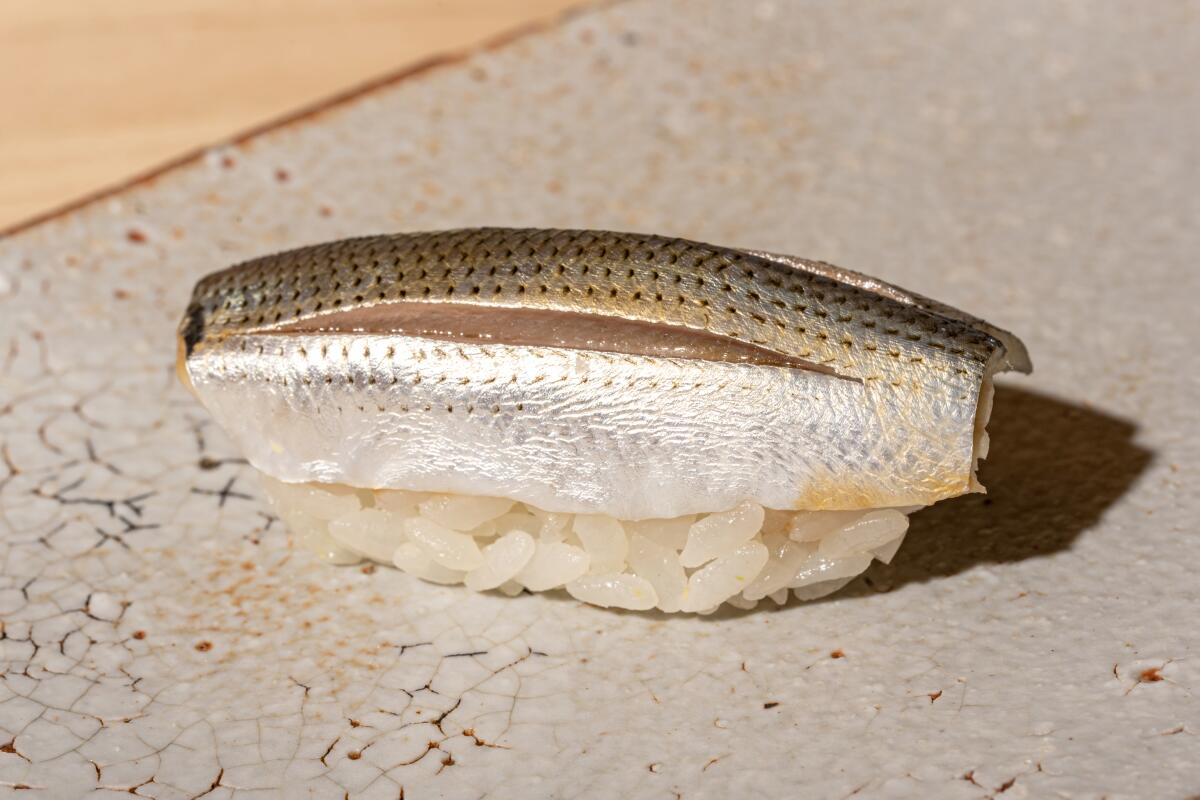
Sushi Kaneyoshi
A few preambles might include grouper karaage; citrusy chawanmushi laced with matsutake mushrooms; and ankimo (monkfish liver) dressed in sweet miso and paired with a tiny log of green onion. Then Inoue and his assistants launch into a procession of edomae-style nigiri, each seasonal seafood aged (or perhaps cured or marinated) and lightly seasoned to magnify its flavors. At one point, he’ll likely hand each person pressed sushi folded into a sheet of nori that crunches like a potato chip. By the final piece, you’re in the master’s trance. This is sushi for connoisseurs, many of whom, at $300 per person, are already regulars.
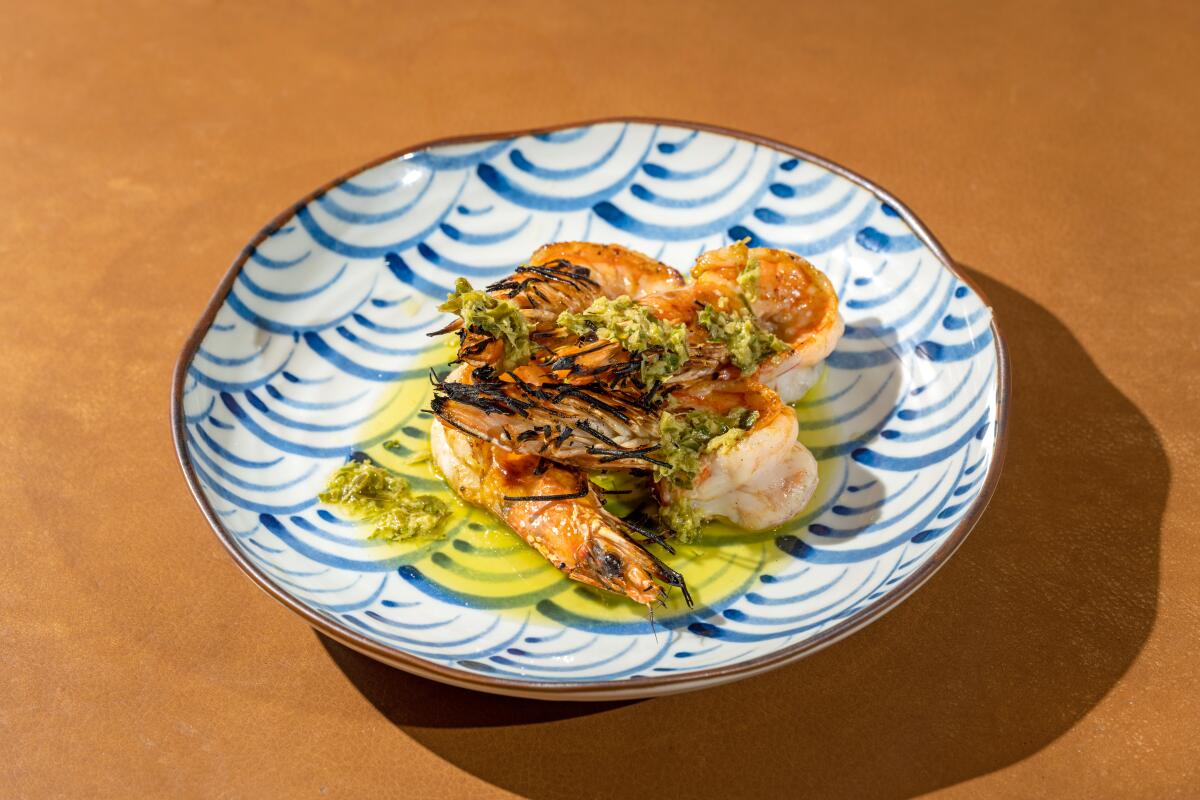
Tsubaki
Kaplan’s selection of sake is one of the deepest and most exciting on the West Coast. I brought a visiting friend here after he gave an incredible performance in a staging of Haydn’s “The Creation” at Disney Hall. I asked Kaplan if she could recommend a sake that felt as celebratory as Champagne. When she poured a golden sparkling liquid that tasted of melon, my friend’s eyes popped with joy, and I was reminded why I often bring out-of-towners here. An even more immersive imbibing experience awaits next door at the couple’s sake bar, Ototo, where the finesse of the okonomiyaki and other drinking foods has all but caught up to the cooking at Tsubaki.
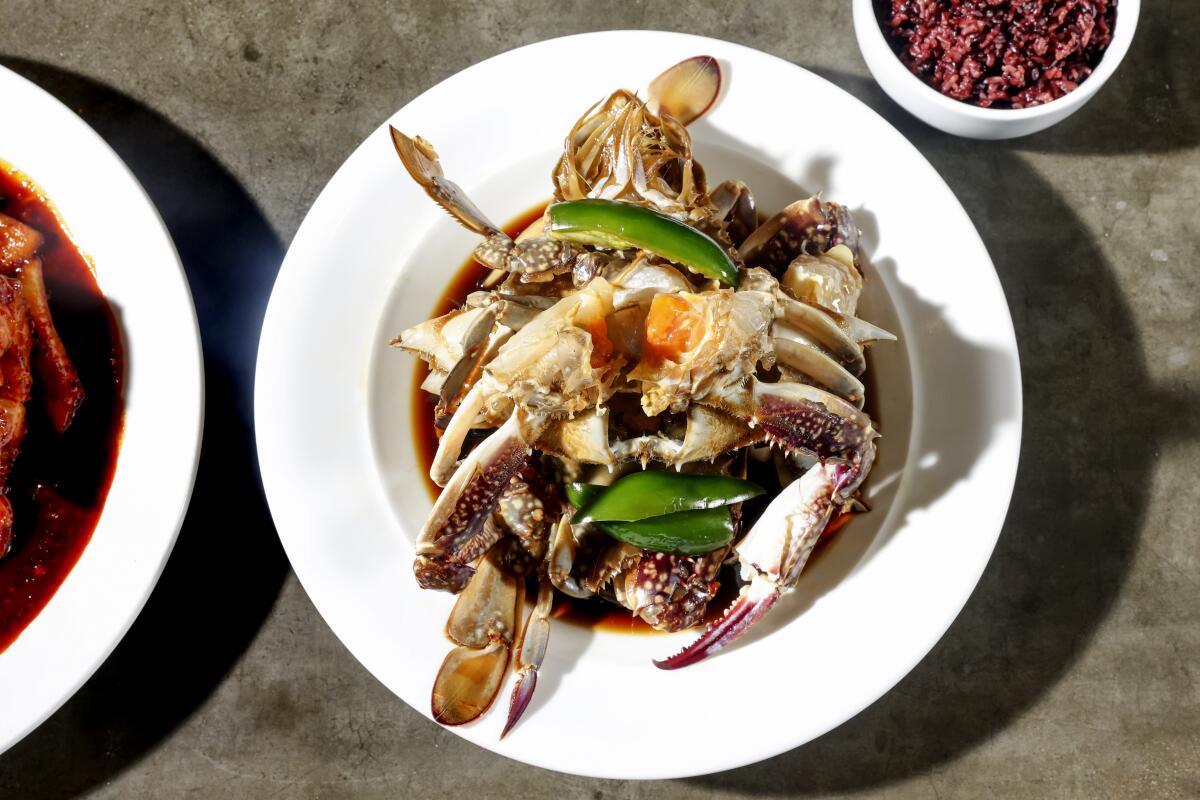
Soban
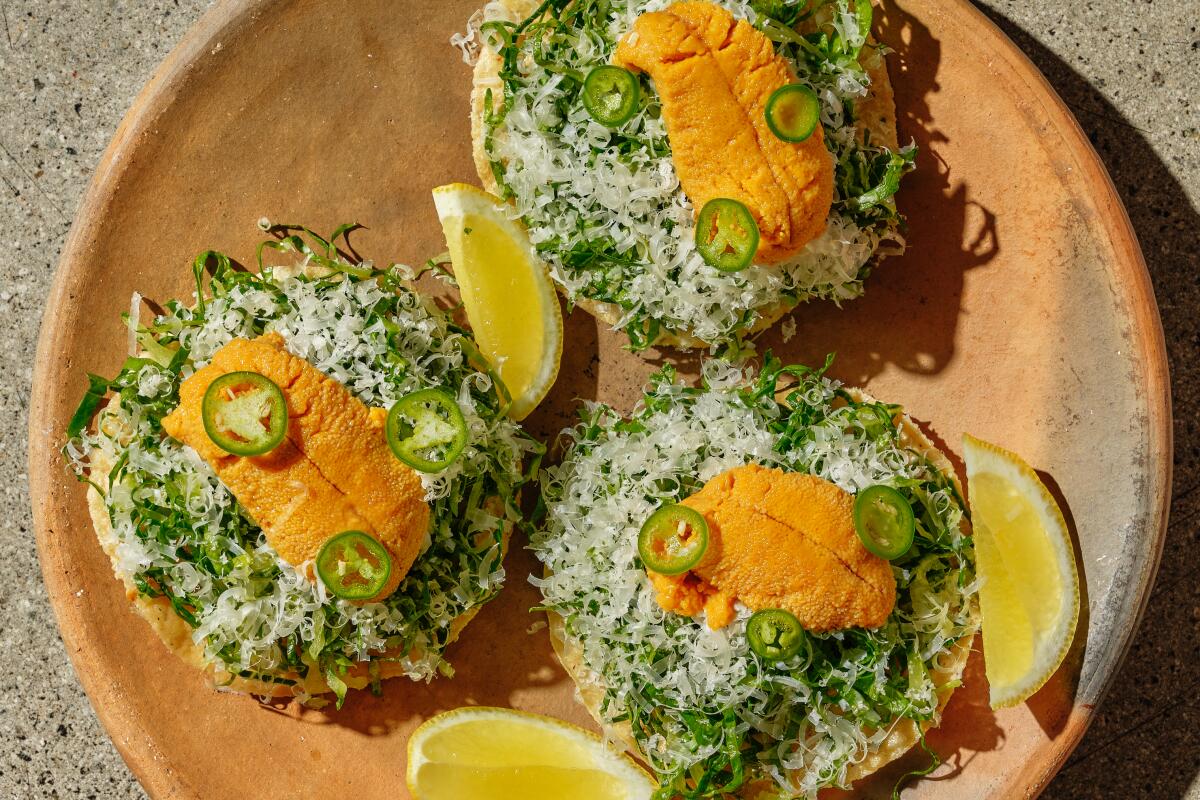
Damian
Housed in a former Arts District warehouse, the interior is mod and moody, though the terrace is especially stunning. Architect Alonso de Garay and designer Micaela de Bernardí have turned the area — amid industrial decay, offset with fresh planters built above winding banquettes — into something exhilarating: part art installation, part urban haven.
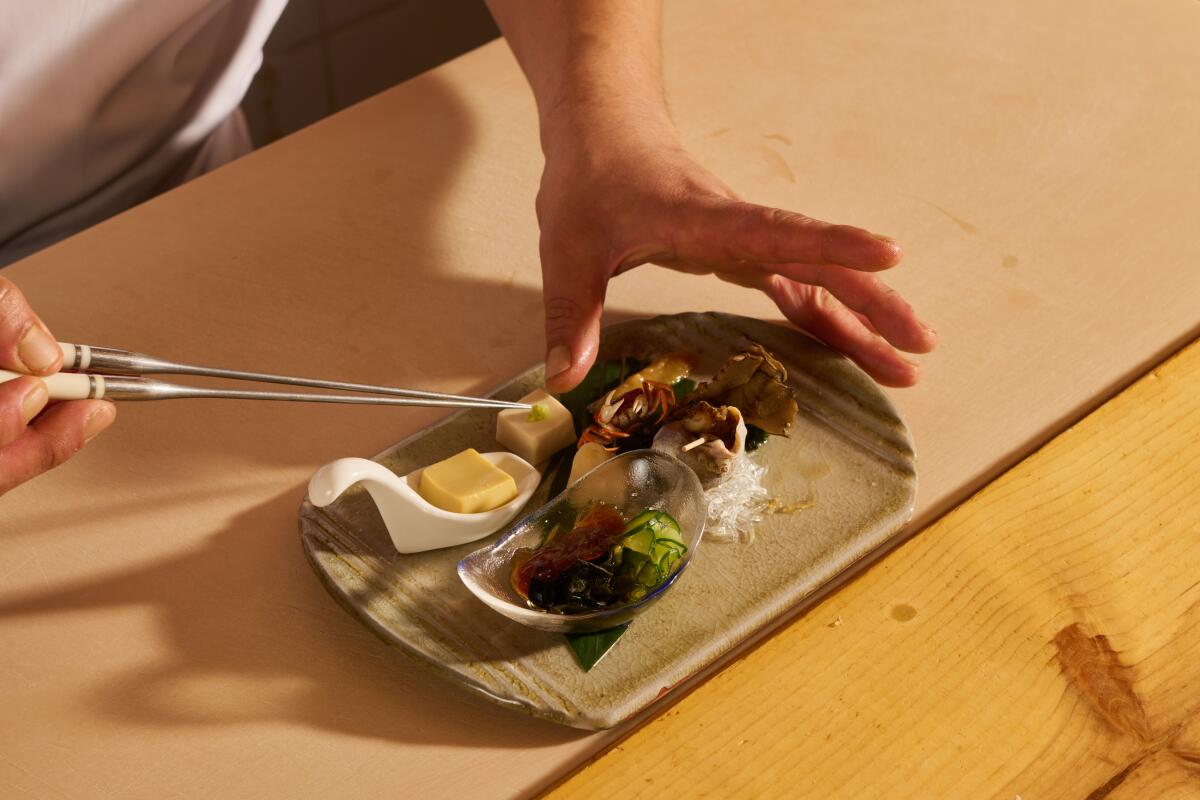
Shin Sushi
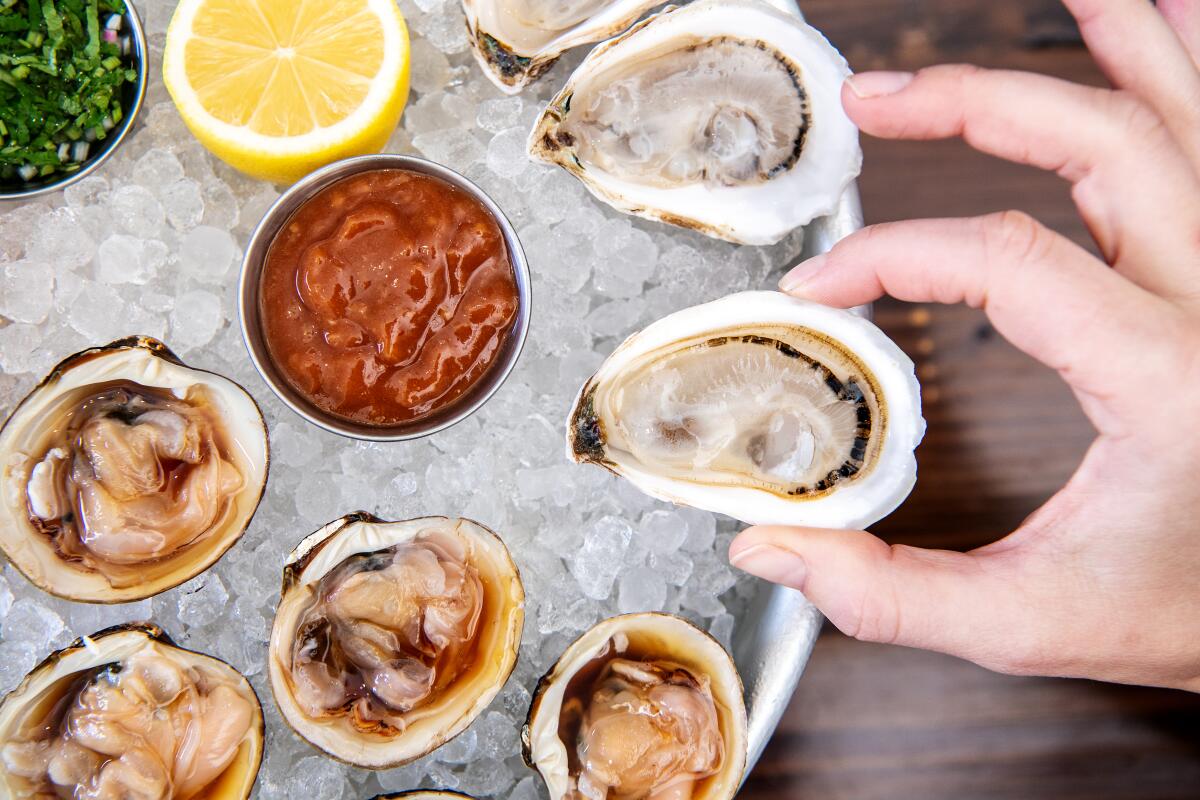
Found Oyster
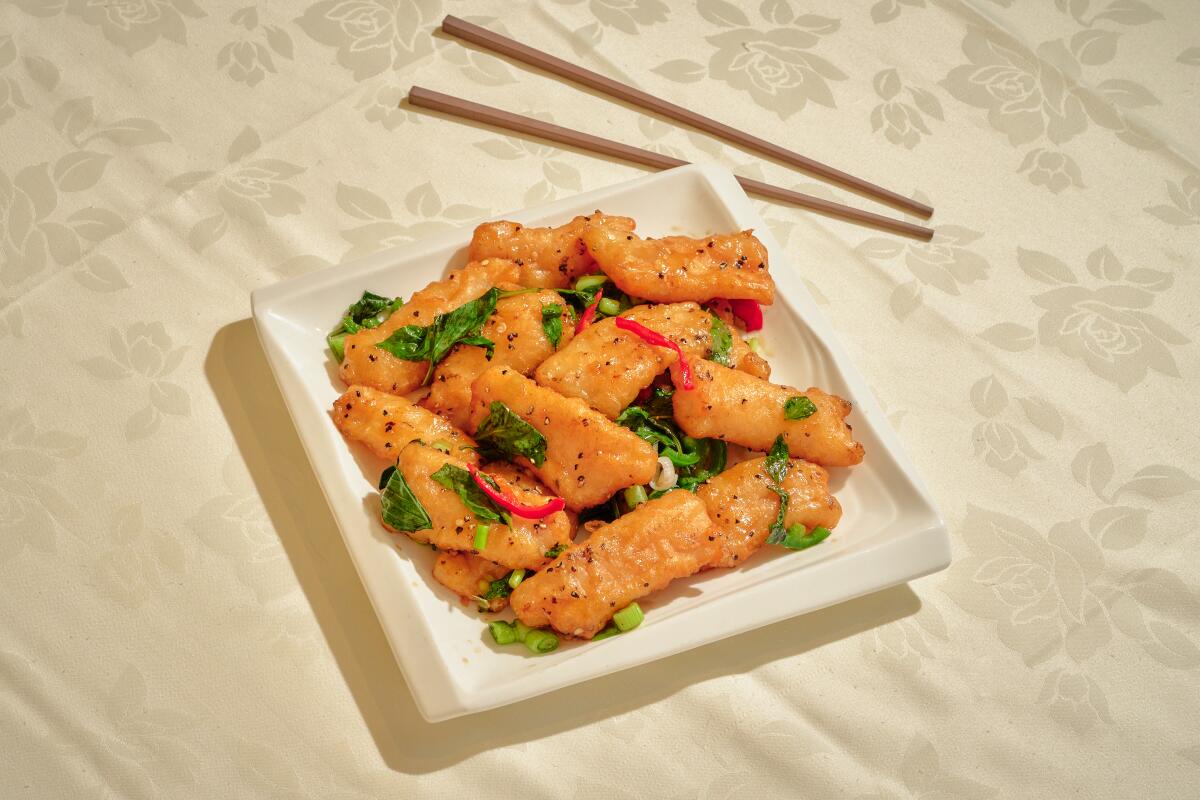
Henry's Cuisine
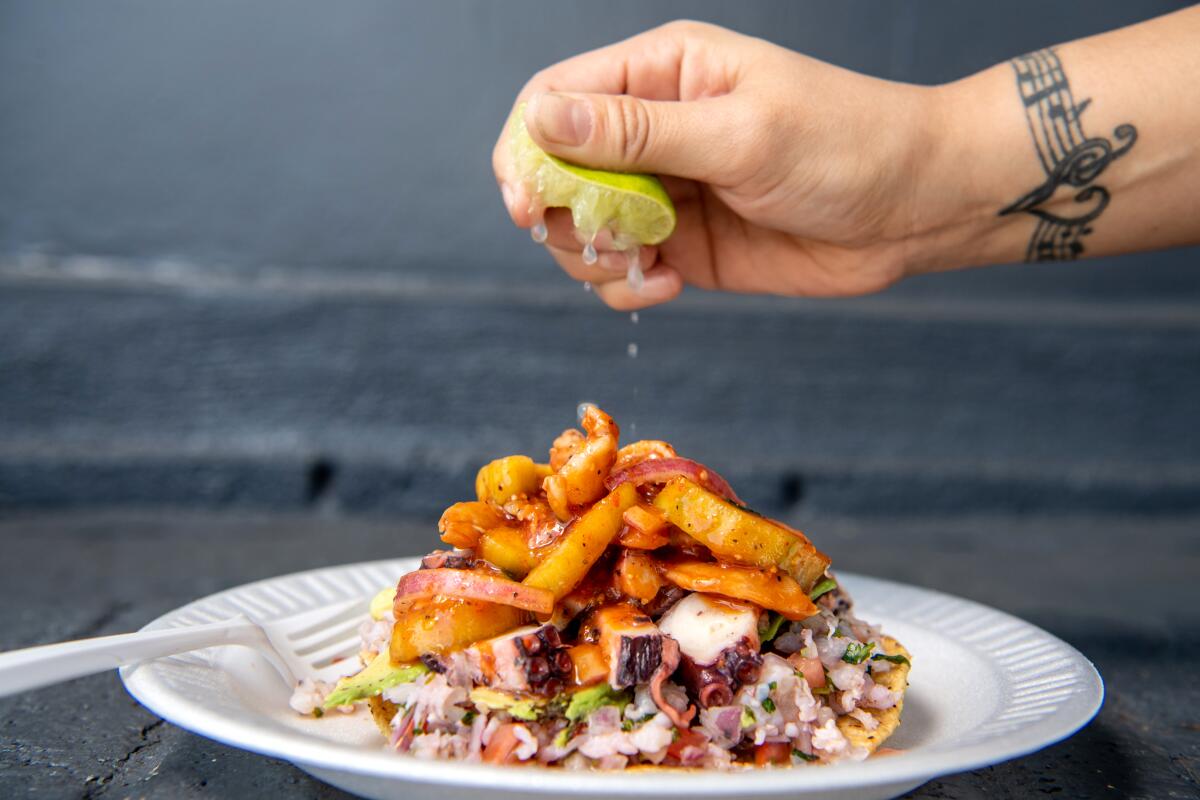
Mariscos Jalisco
I am one in a lineage of restaurant critics declaring Mariscos Jalisco to be a worthy first meal in Los Angeles if you want to understand the city’s culinary culture. I’m still amazed at how many people ask me for taco recommendations and have never heard of the place. Maybe this will help: Ortega operates three additional outposts, including a counter restaurant in Pomona, with the same menu, and a lonchera on the Westside. If none of them quite reaches the summits of the Boyle Heights truck, it still might be the most amazing seafood taco you’ve ever had.
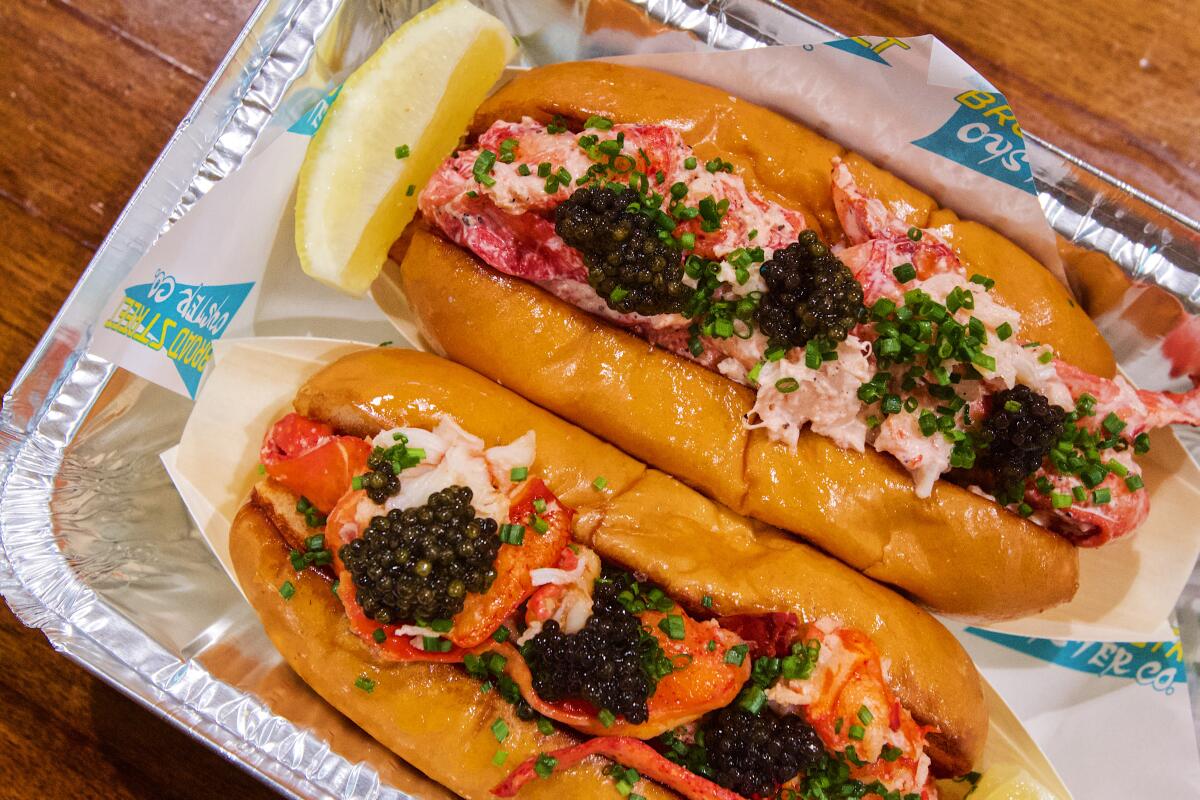
Grand Central Market
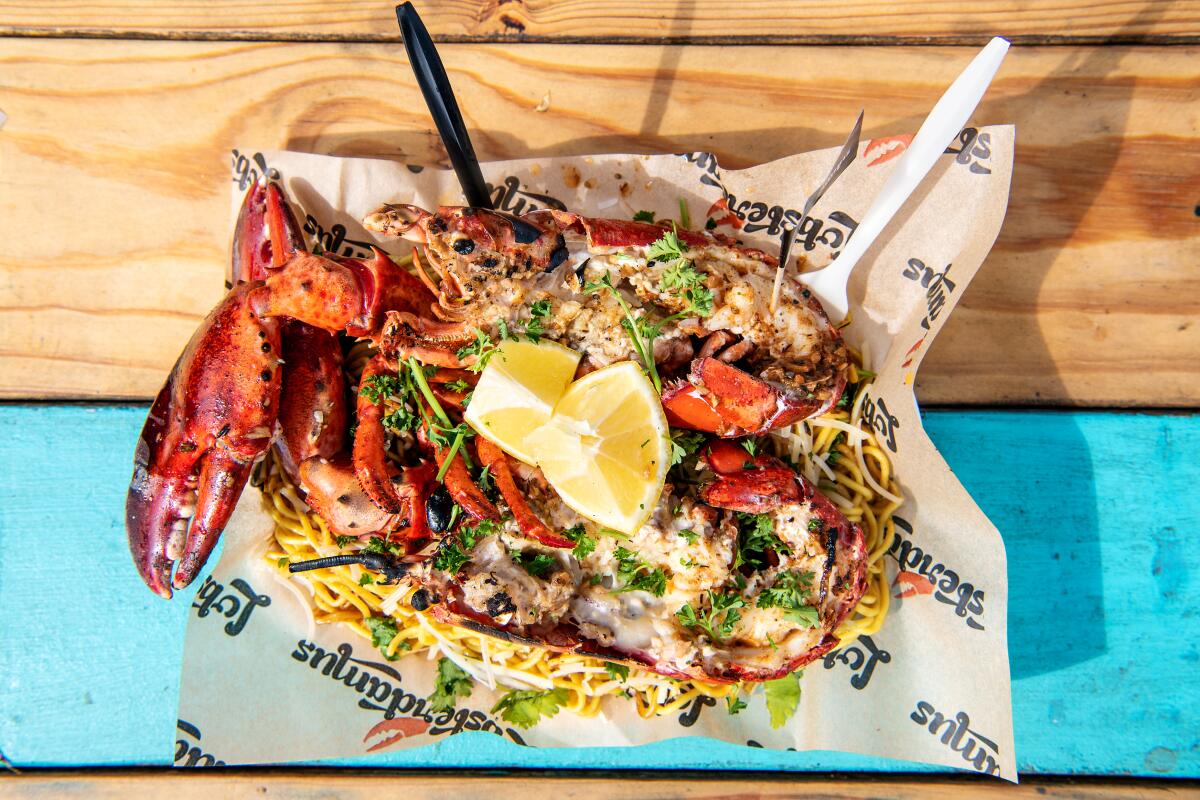
Smorgasburg L.A.
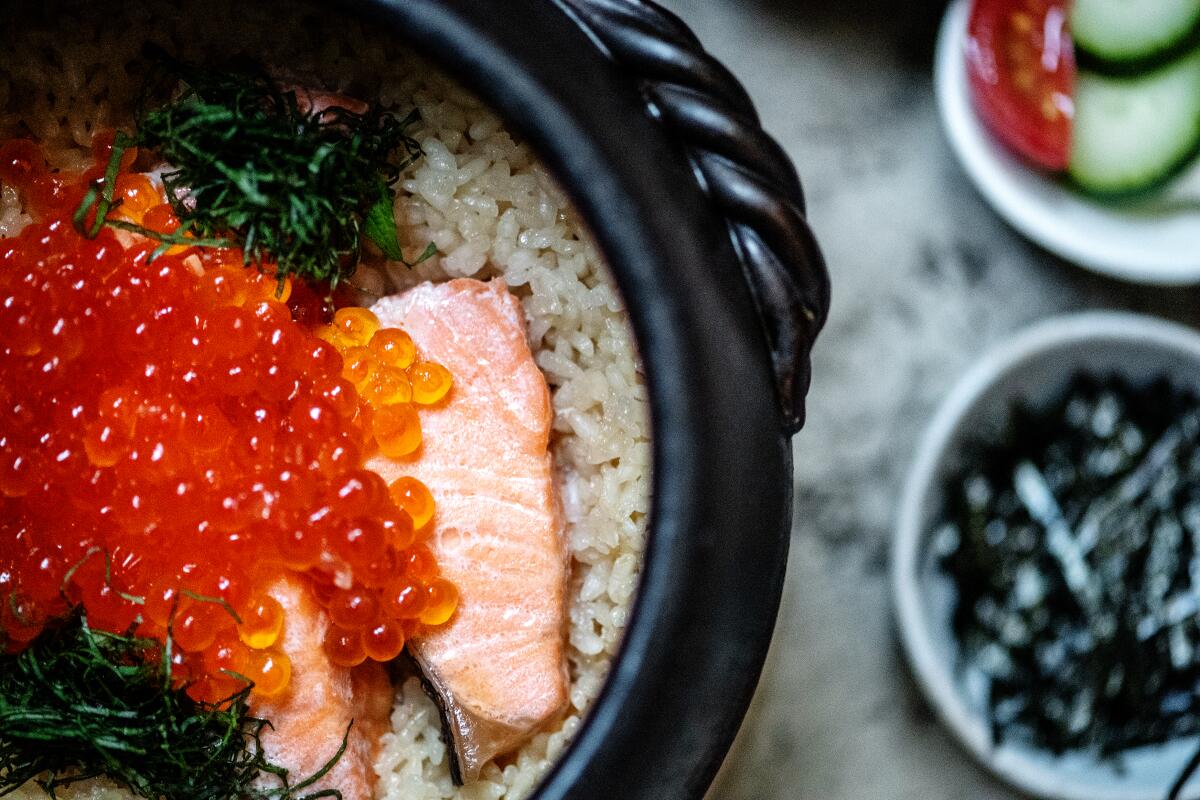
n/soto
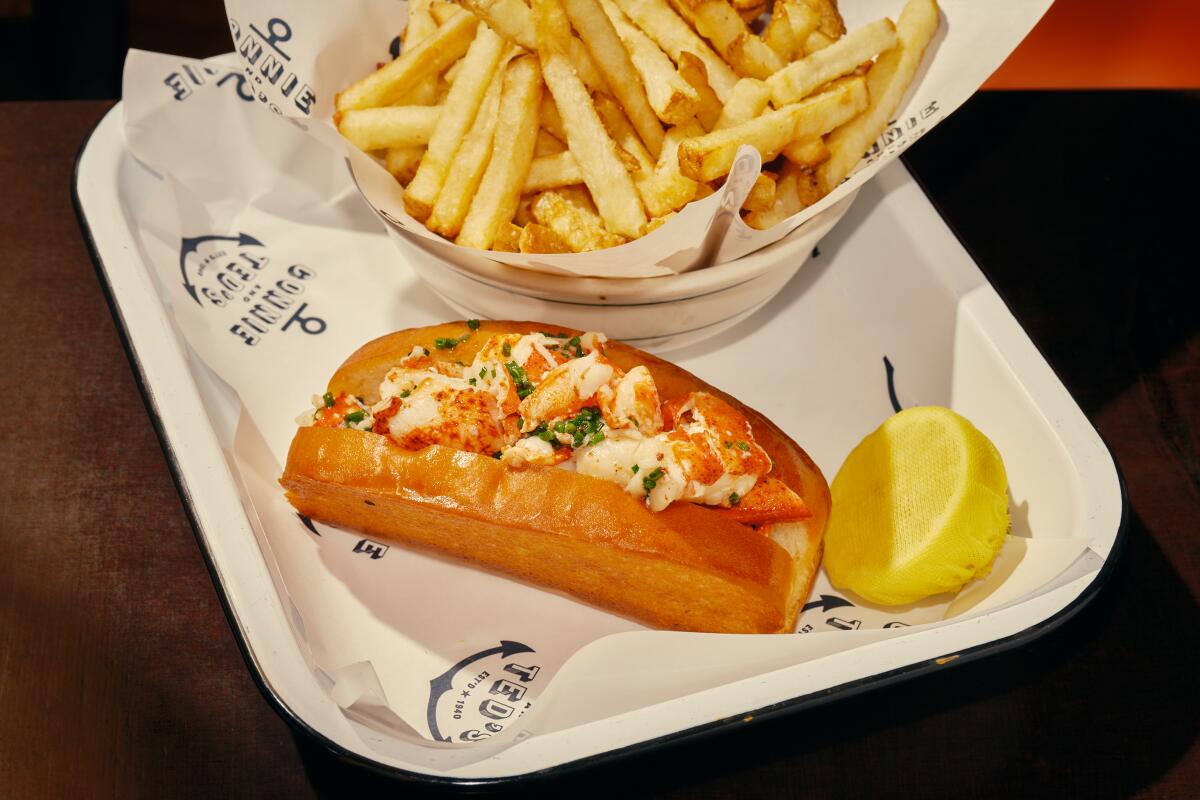
Connie and Ted’s

Fishing With Dynamite
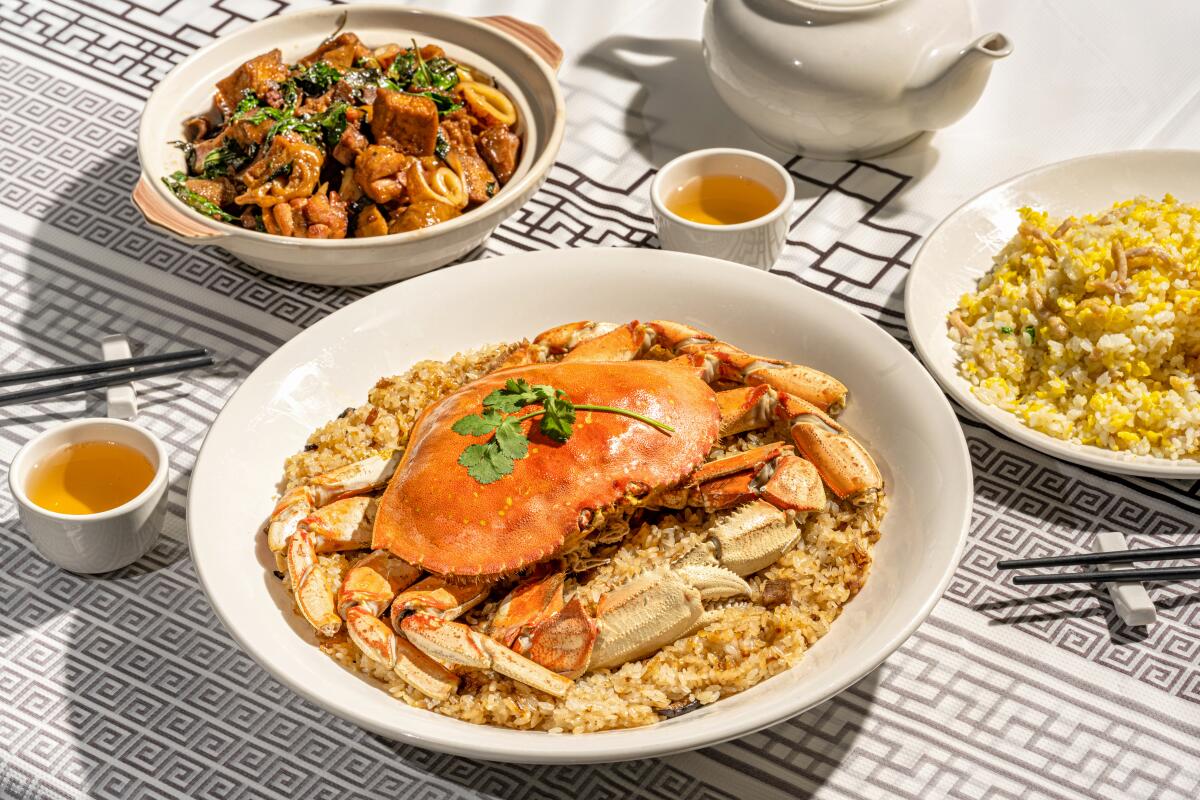
Eat Joy Food
Eat your way across L.A.
Get our weekly Tasting Notes newsletter for reviews, news and more.
You may occasionally receive promotional content from the Los Angeles Times.







